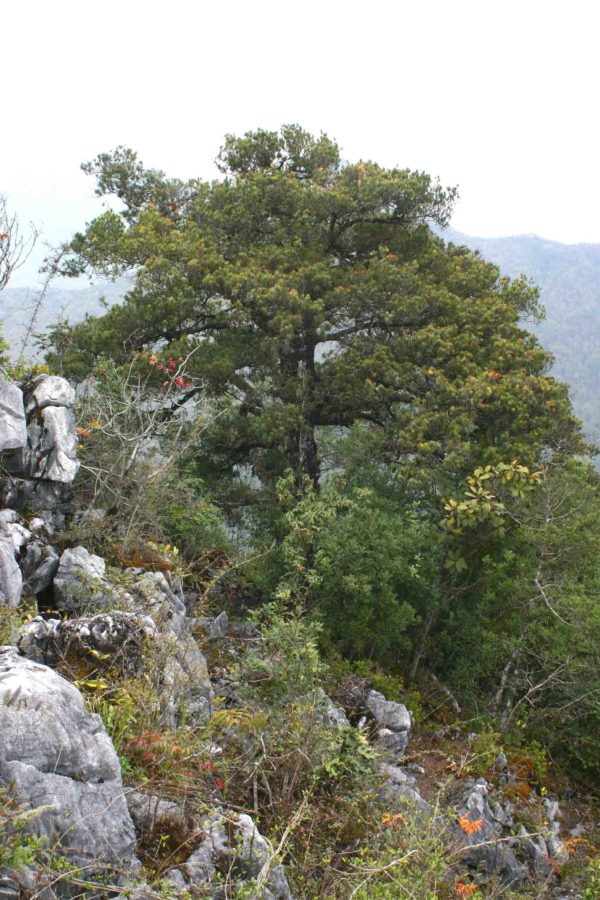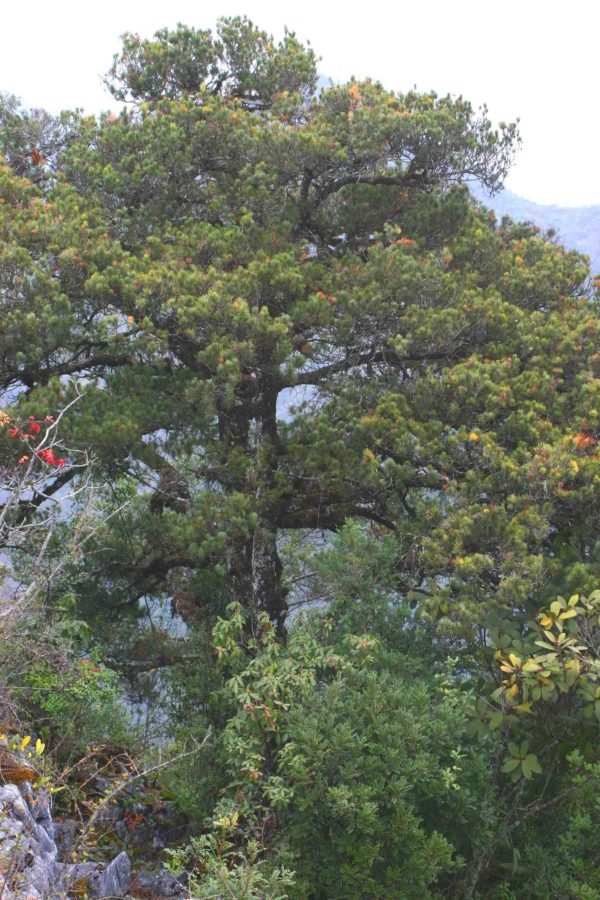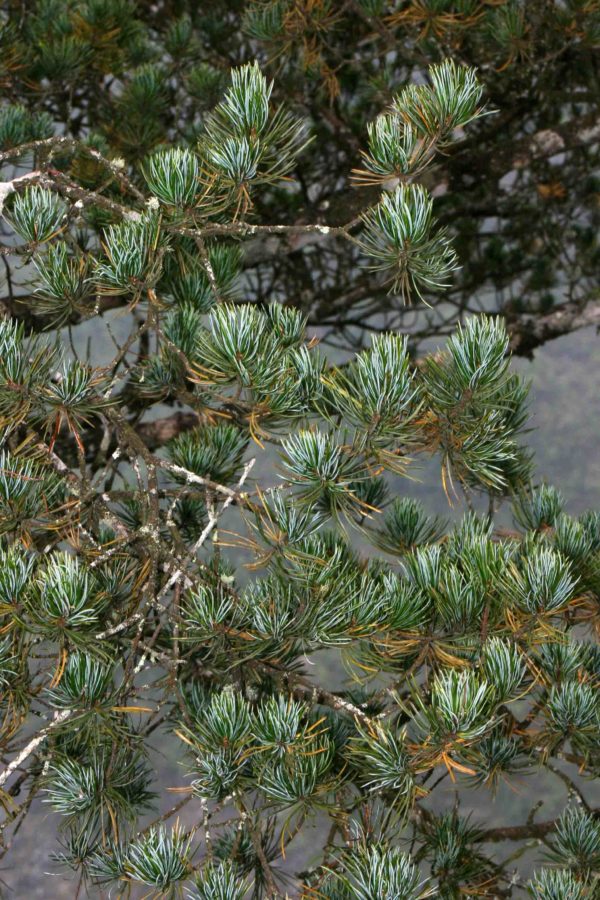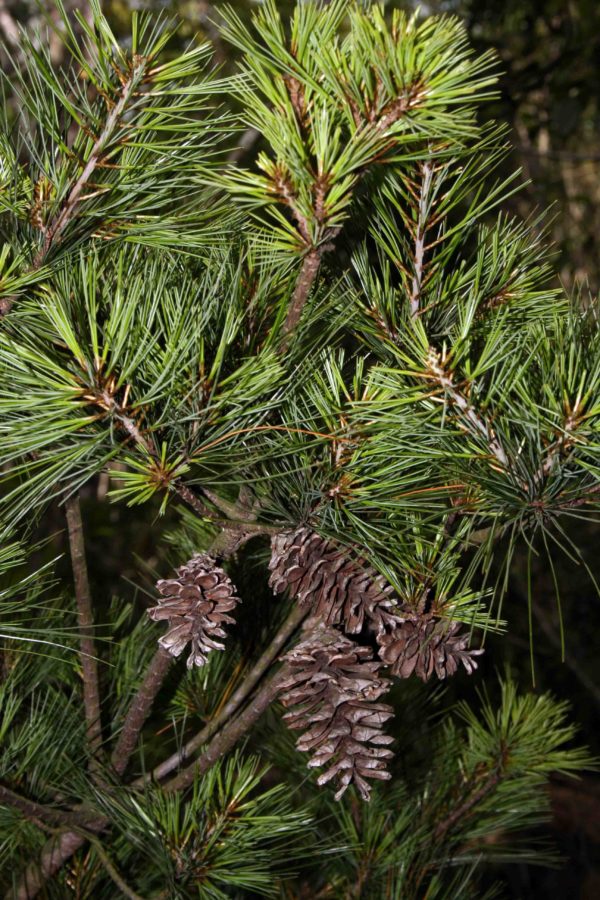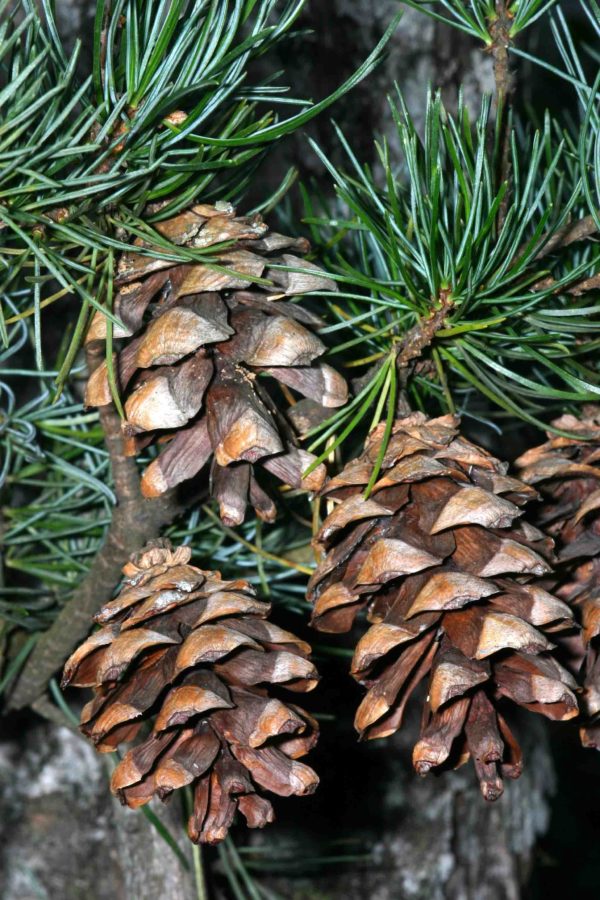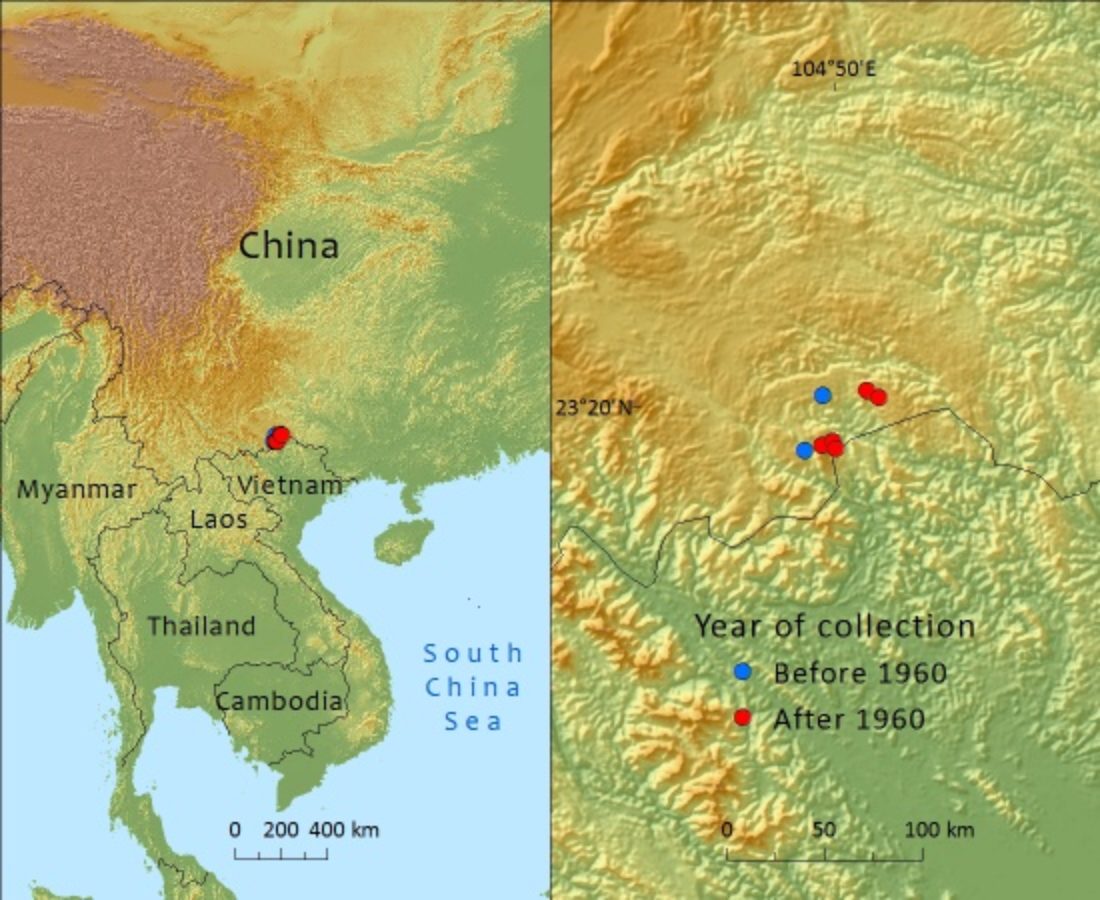Pinaceae
Pinus wangii
This species is only known for certain from karst limestone areas of three counties in Yunnan where it has been heavily exploited for its timber, despite the ruggedness of the terrain. Lower altitude sites are also indirectly impacted by the clearance of the valleys and lower slopes for agriculture.
Description
Taxonomic Notes
Similar five needle pines occur in northern Việt Nam in the karst areas of the north east and to the southwest of Hanoi. These are sometimes identified as Pinus kwangtungensis which itself is treated as a synonym of Pinus fenzeliana Hand.-Mazz. on the IUCN Redlist. Subpopulations in Son La and Hoa Binh have been described as a separate species, Pinus eremitana Businsky. In other taxonomic works Pinus kwangtungensis is treated as a variety of P. wangii so that at the species level, it has a wider distribution in Việt Nam, possibly Lao PDR and southeastern China.
Habit
Small trees 8-20m tall, dbh to 80cm, older trees with broad flattened crown
Foliage
Needles in fascicles of 3-5, usually five, conspicuously curved into a crescent shape, usually 30-60mm long, 0.8-1.5mm wide, usually with very distinct stomatal bands on the ventral side.
Cones
Female cones pendulous at maturity, 4-10cm long and 3.5-6.5cm wide when fully open with 6-20mm long peduncle. May be weakly persistent in whorls. Seeds with short and broad wing.
For a detailed description see Businsky (2004)
Human Uses
Locally used for house building.
References and further reading
- Businsky, R.( 2004). A revision of the Asian Pinus subsection Strobus (Pinaceae). Willdenowia 34: 209-257.
- Farjon, A. (2010). A Handbook of the World's Conifers. Koninklijke Brill, Leiden.
- Farjon, A. 2013. Pinus wangii. In: IUCN (2013). IUCN Red List of Threatened Species. Version 2013.1. <www.iucnredlist.org>. Downloaded on 13 July 2013.
- Nguyen, T.H., Phan, K.L., Nguyen, D.T.L.,Thomas, P.I., Farjon, A., Averyanov, L. & Regalado Jr., J. (2004). Vietnam Conifers: Conservation Status Review 2004. Fauna & Flora International, Vietnam, Hanoi.
- Tiancai Huang, Chunlin Long (2011). Priorities for genetic resource collection and preservation of wild gymnosperms in Yunnan: an analysis based on the “3E” principle. Biodiversity Science 19(03): 319-326
- Yongpeng Ma, Gao Chen, R. Edward Grumbine, Zhiling Dao & Weibang Sun (2013). Conserving plant species with extremely small populations (PSESP) in China. Biodiversity and Conservation. 22(3): 803-809
